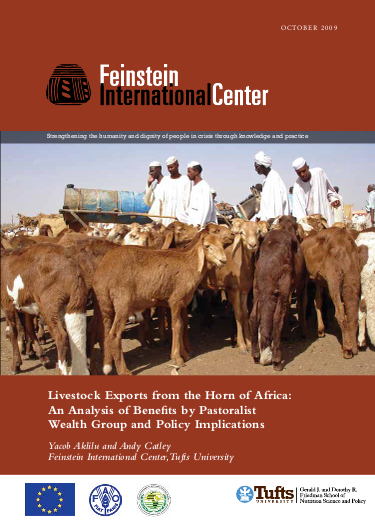
There have been substantial investments from aid donors in livestock marketing in pastoralist areas of the Horn of Africa for more than thirty years. Most recently, this support has included attention to the export of live animals from the region and related certification, quarantine, and other inputs. Such programs have often been justified by broader economic development narratives, which have placed commercialization and export trade as, apparently, a driving force for poverty reduction. Therefore, it has often been assumed that in pastoralist areas a linear and simple relationship exists between “better access to export markets” and “poverty alleviation.” This report was commissioned by FAO under the IGAD Livestock Policy Initiative and examines the benefits derived from the livestock export trade from pastoral areas by wealth group. Simply put, do some groups benefit more than others and if so, who? If the benefits are skewed towards, for example, wealthier pastoralists and other actors, to what extent can livestock export systems be justified in terms of reducing pastoral poverty or vulnerability? The backdrop to the report includes increasing evidence that more people are leaving pastoralism in the region, and many of these people are becoming destitute, with few non-livestock economic opportunities available in these areas.